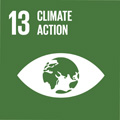- Docente: Filippo Piva
- Credits: 2
- SSD: ICAR/15
- Language: Italian
- Teaching Mode: Traditional lectures
- Campus: Cesena
- Corso: Single cycle degree programme (LMCU) in Architecture (cod. 9265)
Learning outcomes
The module aims to provide graduates with the cultural and operational tools to deal with the project and the active conservation of open spaces at all intervention scales (from the historic garden to the landscape, to sites, archaeological areas and parks) with particular reference to the interpretative reading of the spatial and temporal complexity of the places, to the reactivation of the different systems of existing relationships (historical, cultural, perceptive, productive-functional, ecological and environmental) and to the design management of the vegetable and mineral components.
Course contents
The Final Workshop: Design, History and Restoration (C.I.16 CFU, 192 hours) consists of the module/ teaching characteristic of Restoration (6 CFU, 72 hours) as well as a module/ teachings of:
- New technologies for the Survey of Architecture (2 CFU, 24 hours).
- Aesthetic and landscape (2 CFU, 24 hours);
- Rehabilitation of historic buildings (2 CFU, 24 hours);
- Design and active conservation of historic landscapes and open spaces (2 CFU, 24 hours);
- Architectural composition/museography (2 CFU, 24 hours).
Readings/Bibliography
For the general bibliography, please refer to the laboratory:
Needed to understand the themes of the Laboratory:
Tessa Matteini, Paesaggi del tempo. Documenti archeologici e rovine artificiali nel disegno del giardino e del paesaggio, Alinea, Firenze, 2009.
Luigi Latini, Tessa Matteini, Manuale di coltivazione pratica e poetica. Per la cura dei luoghi storici e archeologici nel Mediterraneo, Il Poligrafo, 2017
AA.VV., Archeologie e paesaggi del quotidiano, Architettura del Paesaggio n° 29, rivista di AIAPP (Associazione Italiana Architettura del Paesaggio), Paysage Editore, Milano, 2013
Recommended for in-depth study of the Laboratory themes:
Franco Cambi, Manuale di Archeologia dei paesaggi. Metodologie, fonti, contesti, Carocci Editori, Roma, 2011
Emilio Sereni, Storia del paesaggio agrario italiano, Laterza Editori, Roma-Bari, 1961
Carlo Tosco, Il paesaggio storico. Le fonti e i metodi di ricerca, Laterza Editori, Bari, 2009
Giulia Caneva (a cura di), La Biologia vegetale per i beni culturali Vol. II. Conoscenza e Valorizzazione, Nardini Editore, Firenze, 2005
Pierre Grimal, I giardini di Roma antica, Garzanti libri, 2000
Teaching methods
Lectures, joint audits with other teachers, inspections.
Participation in lectures, reviews and inspections has a decisive role in the elaboration of the final thesis.
Assessment methods
The Final Workshop: Design, History and Restoration includes the verification of the learning of the contents of all the modules/teachings that make up the Integrated Course and takes place in a single examination test.
The evaluation will be effected on the basis of the laboratory work explained on the final report of the project.
The evaluation will be effected on the basis of the laboratory work explained on the final report of the project. The assessment of suitability is based on the weighted application of the following three criteria: knowledge of the theoretical content and bibliography and acquisition of instrumental skills (30%), level of detail of the project hypothesis (30%), clarity and effectiveness of presentation (40%).
Teaching tools
Teaching material: the teaching material presented in class is made available to the student in electronic format via the internet.
Office hours
See the website of Filippo Piva
SDGs




This teaching activity contributes to the achievement of the Sustainable Development Goals of the UN 2030 Agenda.
